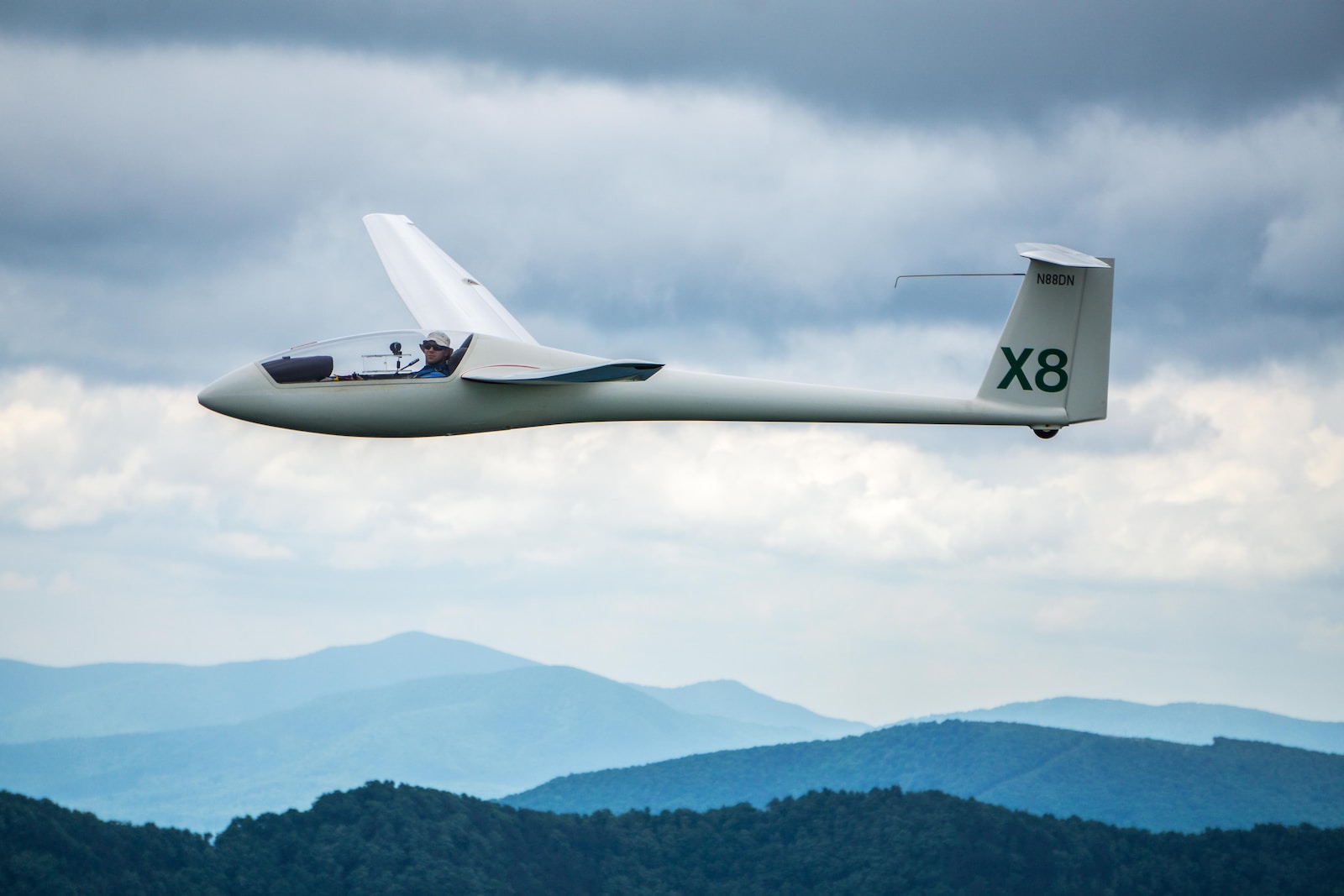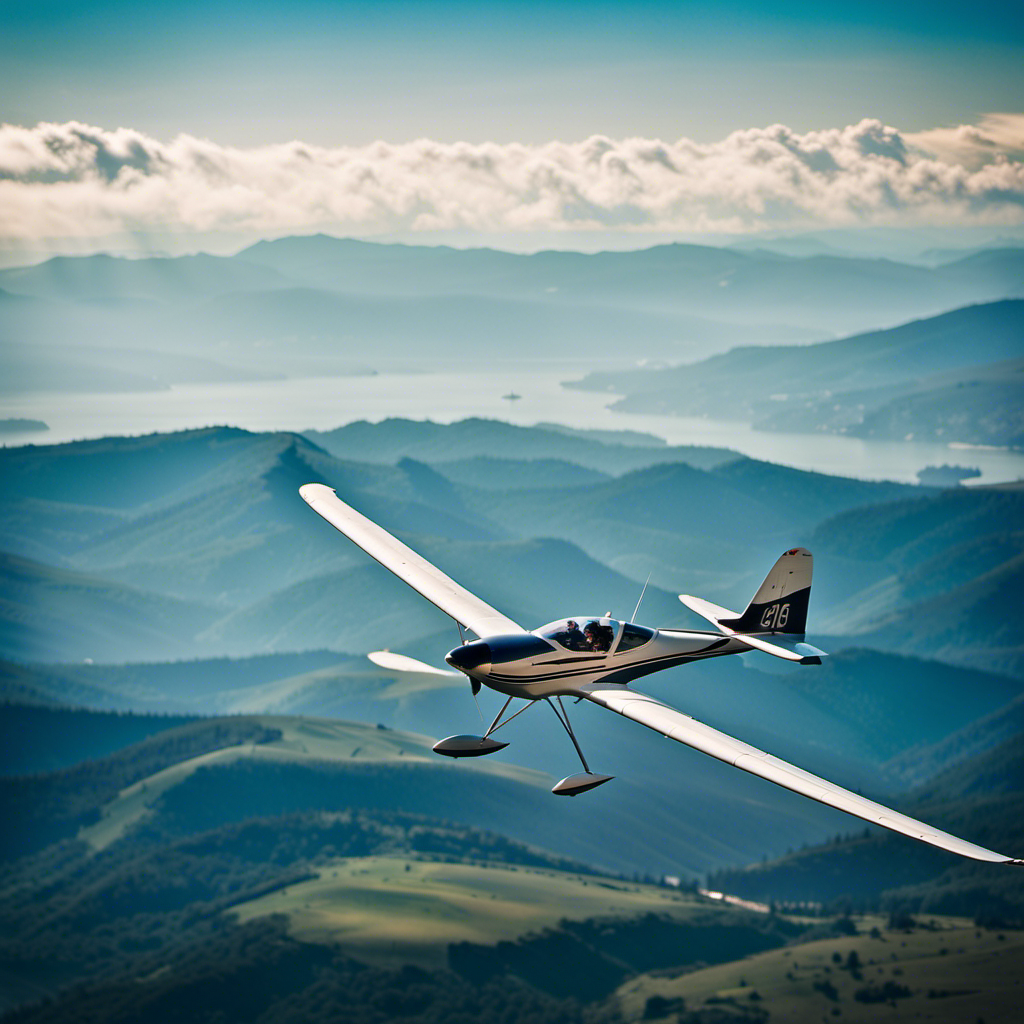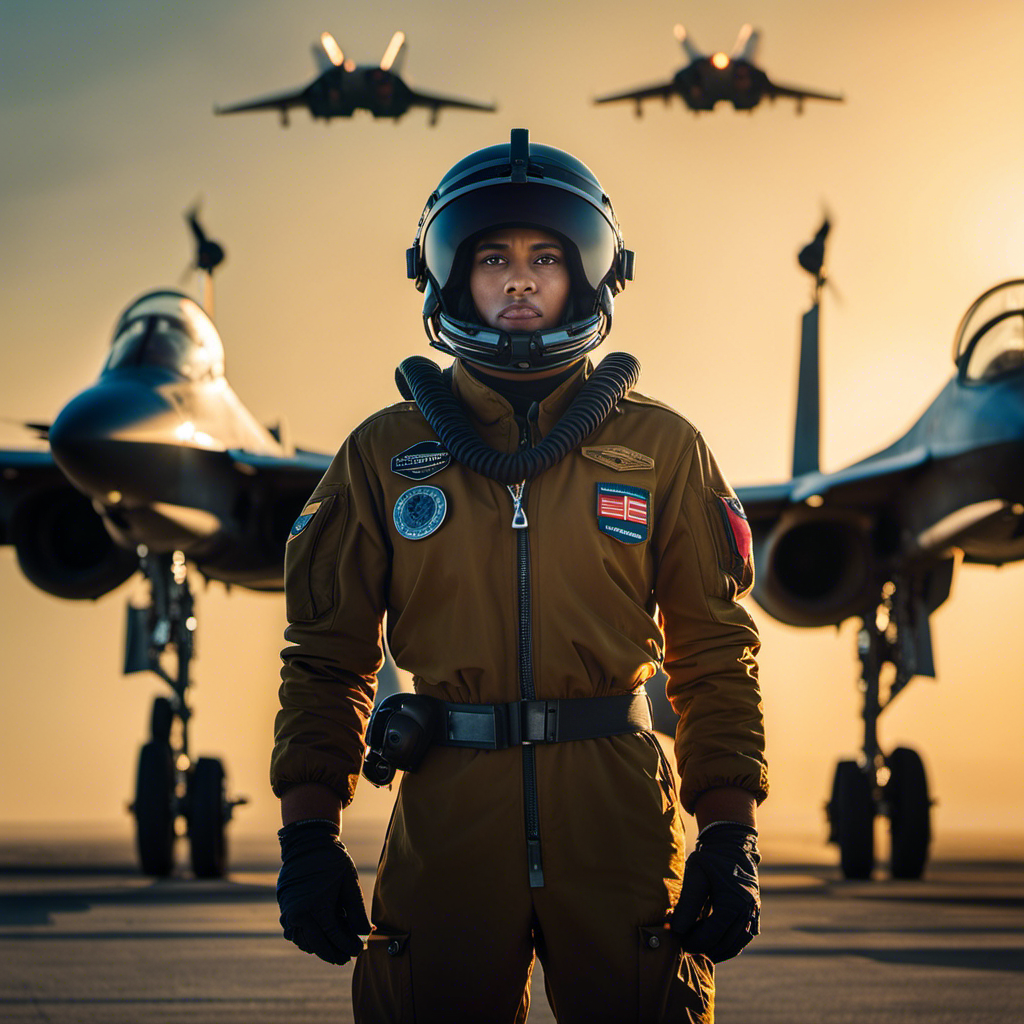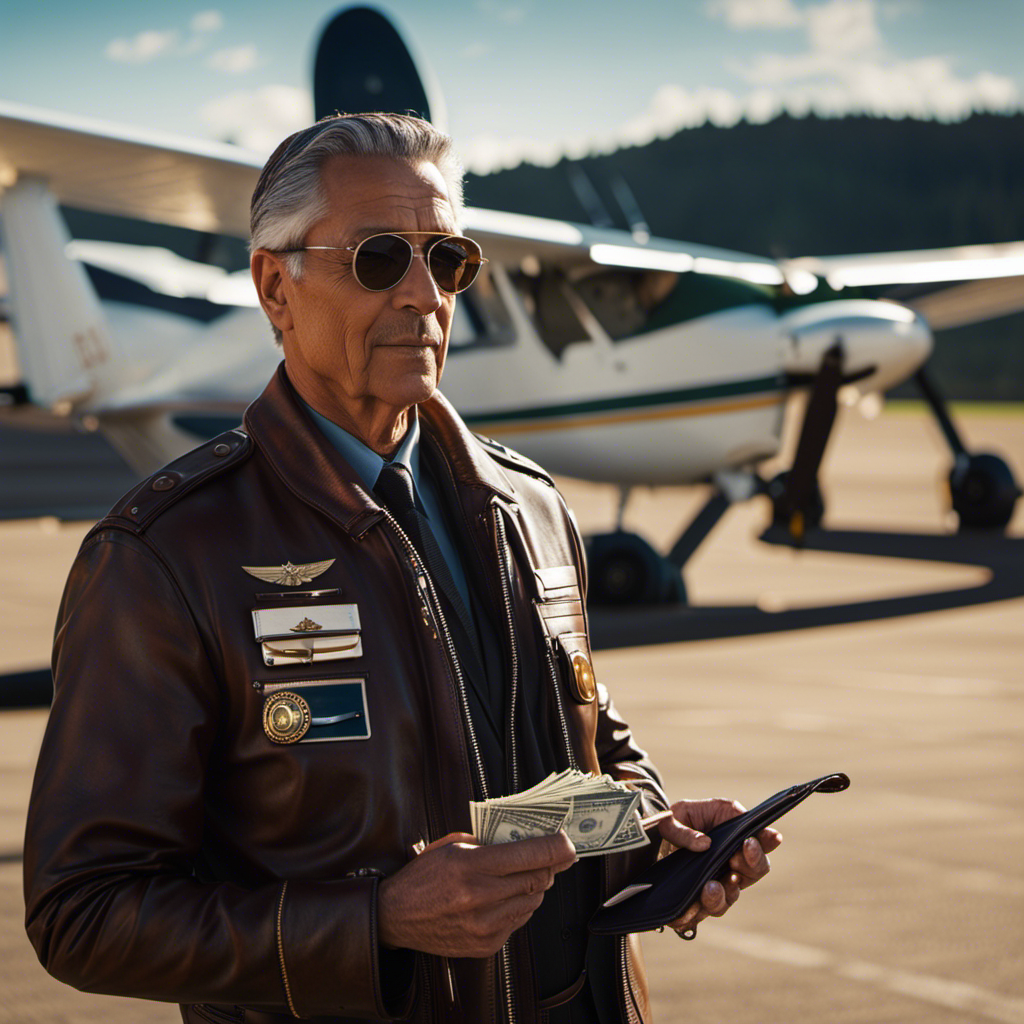Have you ever dreamed of soaring through the skies, feeling the wind against your skin? The time is now to turn that dream into reality.
In the world of glider flying, there’s an age restriction you need to know about. So, what is the minimum age to fly a glider? This article will provide you with all the essential information, from age requirements in different countries to the training process for young pilots.
Get ready to embark on an exhilarating journey as we explore the world of glider flying together.
Key Takeaways
- The minimum age to fly a glider solo is 14 years old in the United States and Australia, and 16 years old in the United Kingdom.
- Age restrictions are in place to ensure safety and the necessary skills and judgment.
- Accompanied flights and junior gliding programs allow younger individuals to experience gliding and receive guidance from experienced pilots.
- Training for young pilots includes ground school, theory lessons, flight training with certified instructors, and solo flights.
Understanding the Basics of Glider Flying
To understand the basics of glider flying, you’ll need to grasp the concept of lift and how it keeps the glider in the air. Lift is the force that counteracts gravity and allows the glider to stay aloft. It is generated by the shape of the glider’s wings, which are designed to create a pressure difference between the upper and lower surfaces.
As the glider moves through the air, the airfoil shape of the wings creates a higher pressure underneath and a lower pressure above, resulting in lift. This upward force enables the glider to soar and maneuver in the sky. Understanding lift is fundamental to glider flying as it forms the basis for controlling the aircraft and navigating through the air.
Now let’s explore the importance of age restrictions in glider flying.
The Importance of Age Restrictions in Glider Flying
Age restrictions are crucial in determining who can pilot a glider. These restrictions are in place to ensure the safety of both the pilot and those on the ground.
Glider flying requires a certain level of maturity and responsibility, as it involves making split-second decisions and operating a complex aircraft. Younger individuals may not possess the necessary skills or judgment to handle the challenges that come with flying a glider.
By setting age restrictions, authorities can ensure that only those who are capable and experienced enough are allowed to take control of a glider.
Now, let’s explore the minimum age requirements for glider flying in different countries, which vary based on factors such as regulations, training programs, and national aviation authorities.
Minimum Age Requirements for Glider Flying in Different Countries
Different countries have specific requirements for who can pilot gliders, ensuring that only individuals who meet certain criteria are allowed to take to the skies. Here are three examples of minimum age requirements for glider flying in different countries:
- In the United States, you must be at least 14 years old to fly a glider solo. However, you can start training at a younger age with the supervision of a certified instructor.
- In the United Kingdom, the minimum age for solo glider flying is 16 years old. Again, you can begin training at a younger age, but solo flights are only permitted once you reach the minimum age.
- In Australia, the minimum age requirement for solo glider flying is also 14 years old, similar to the United States.
These age restrictions are put in place to ensure the safety of both the pilot and others in the airspace. However, there are exceptions to the minimum age requirement, which we will explore in the next section.
Exceptions to the Minimum Age Requirement
In some cases, there are exceptions to the minimum age requirement for glider flying. One option is accompanied flights, where a junior pilot can fly with a certified adult instructor. This allows younger individuals to experience the joy of gliding while still learning from a qualified professional.
Another option is junior gliding programs, which are specifically designed for aspiring young pilots and provide comprehensive training and support tailored to their age and skill level. These programs aim to foster a love for aviation and encourage the next generation of glider pilots.
Accompanied Flights
With accompanied flights, you can experience the thrill of gliding even if you don’t meet the minimum age requirement. Accompanied flights allow individuals who are younger than the minimum age to still enjoy the exhilarating experience of soaring through the sky in a glider.
During these flights, you will be accompanied by a qualified and experienced pilot who will ensure your safety and guide you through the flight. This allows you to get a taste of what gliding is all about and can be a great way to spark your interest in the sport.
Accompanied flights are a fantastic opportunity for those who are too young to fly solo but still want to experience the joy of gliding.
From here, you can transition into learning about junior gliding programs, where you can take your passion for flying to the next level.
Junior Gliding Programs
Explore the exciting world of junior gliding programs, where you can take your passion for flying to new heights and learn all the skills needed to become an accomplished glider pilot. These programs are specifically designed for young aviation enthusiasts like you, providing a safe and supportive environment to develop your flying abilities.
Here are four reasons why junior gliding programs are worth considering:
- Professional Instruction: You will receive expert guidance from experienced glider pilots who will teach you the fundamentals of gliding techniques and safety procedures.
- Hands-on Experience: You will have the opportunity to get behind the controls of a glider and experience the thrill of soaring through the sky under the guidance of your instructor.
- Peer Interaction: Junior gliding programs offer a chance to connect with other young pilots who share your passion for aviation, fostering friendships and a sense of camaraderie.
- Future Opportunities: By participating in junior gliding programs, you will gain valuable experience and knowledge that can pave the way for further aviation pursuits, such as pursuing a career as a professional pilot.
As you delve into the world of junior gliding programs, you’ll soon discover that the journey doesn’t stop there. The next section will guide you through the training and certification process for young pilots, equipping you with the necessary skills and qualifications to take your gliding aspirations even further.
Training and Certification Process for Young Pilots
When it comes to training and certification for young pilots, there are several key points to consider.
First, ground school and theory lessons play a vital role in building a solid foundation of knowledge and understanding of aviation principles. These lessons cover topics such as aerodynamics, weather, navigation, and regulations, providing you with the necessary theoretical background for safe and successful flying.
Next, flight training is where you’ll put that knowledge into practice, honing your skills in the cockpit under the guidance of a certified flight instructor. Through a combination of dual instruction and solo flights, you’ll gain the hands-on experience needed to become a competent pilot.
Ground School and Theory Lessons
During ground school, you will learn the necessary theory for glider flight. This is where you will gain a deep understanding of the principles of flight, aerodynamics, meteorology, navigation, and aircraft systems.
Instructors will guide you through comprehensive lessons, ensuring you have a solid foundation of knowledge before you take to the skies. You will learn about the different types of gliders, their controls, and how to perform pre-flight checks.
Ground school is also an opportunity to familiarize yourself with emergency procedures and develop your decision-making skills. With this strong theoretical background, you will be well-prepared for the next phase of your training: flight training and solo flying, where you will put your knowledge into practice and gain hands-on experience in piloting a glider.
Flight Training and Solo Flying
With flight training and solo flying, you’ll have the opportunity to apply your knowledge and gain practical experience in piloting a glider. This is the stage where you’ll put your theoretical understanding into action and truly feel the thrill of being in control of an aircraft.
During flight training, you’ll learn essential skills such as takeoff, landing, and maneuvering the glider. As you progress, you’ll have the chance to fly solo, further honing your abilities and building confidence. This hands-on experience is invaluable in shaping you into a competent and skilled glider pilot. It allows you to develop a deep understanding of the aircraft’s behavior and responsiveness, as well as the ability to make quick decisions in real-time situations.
Now, let’s explore the advantages and challenges of starting glider flying at a young age.
Advantages and Challenges of Starting Glider Flying at a Young Age
You can experience the advantages and challenges of starting glider flying at a young age.
One of the biggest advantages is the ability to develop a deep understanding of aviation from an early stage. As a young pilot, you have the opportunity to build a solid foundation of knowledge and skills that will benefit you throughout your flying career.
Additionally, starting young allows you to accumulate more flight hours over time, which can be a significant advantage when pursuing advanced certifications or careers in aviation.
However, there are also challenges to consider. Flying gliders requires a high level of maturity, responsibility, and discipline, which can be demanding for younger individuals. It is crucial to maintain a strong focus on safety and adhere to strict guidelines and procedures.
With parental consent and support, young pilots can overcome these challenges and embark on an exciting journey in the world of glider flying.
Parental Consent and Support for Young Pilots
Now that you understand the advantages and challenges of starting glider flying at a young age, it’s important to discuss the role of parental consent and support in this endeavor.
As a young pilot, you may be eager to take to the skies, but it’s crucial to have the backing of your parents or legal guardians. They are responsible for granting their consent and ensuring that you have the necessary resources and guidance to pursue your passion for glider flying.
From signing the required forms to providing financial support and accompanying you to training sessions, parental involvement is vital in making your dreams take flight. With their encouragement and assistance, you can navigate the challenges and make the most of the opportunities that come your way.
Now, let’s dive into the inspiring stories of young glider pilots who have achieved remarkable feats in this exhilarating sport.
Inspiring Stories of Young Glider Pilots
Are you curious about the incredible achievements and records set by young glider pilots?
In this discussion, we will explore the inspiring stories of these remarkable individuals who have defied expectations and pushed the boundaries of what is possible in glider aviation.
From breaking records to overcoming challenges, these young pilots have shown us that with determination and perseverance, dreams can become a reality.
Get ready to be inspired by their extraordinary journeys!
Achievements and Records
If you’re interested in achievements and records, there have been numerous impressive feats accomplished in the world of glider flying. From long-distance flights to high-altitude records, these accomplishments demonstrate the incredible capabilities of glider pilots.
For example, in 2017, a glider pilot set a new world record by flying a distance of 1,944 kilometers in a single flight. Another notable achievement is the altitude record set by a glider pilot, who reached an astonishing height of 15,460 meters.
These accomplishments not only showcase the skill and determination of the pilots but also push the boundaries of what is possible in glider flying. These achievements serve as inspiration for those who are striving to overcome challenges and pursue their dreams in the world of glider flying.
Overcoming Challenges and Pursuing Dreams
Take a moment to reflect on the challenges you’ve faced and the dreams you’ve pursued, knowing that the world of glider flying offers endless opportunities for growth and achievement. Glider flying is not just about soaring through the skies; it is about pushing your limits, overcoming obstacles, and realizing your potential. It requires dedication, skill, and a willingness to learn. The table below highlights some of the challenges you may encounter as a young glider pilot, along with the corresponding rewards:
| Challenges | Rewards | Opportunities |
|---|---|---|
| Weather conditions | Improved decision-making skills | Learning to read weather patterns and making safe flying choices |
| Navigation | Enhanced spatial awareness | Developing strong navigation skills and exploring new destinations |
| Maintenance | Understanding aircraft mechanics | Gaining valuable knowledge about aircraft maintenance and troubleshooting |
| Competitions | Building resilience and sportsmanship | Testing your skills against other pilots and achieving personal bests |
Resources and Organizations for Young Glider Pilots
If you’re a young aspiring glider pilot, there are several resources and organizations available to support your journey.
Youth Gliding Associations provide a platform for young pilots to connect, learn, and grow in their passion for gliding.
Additionally, scholarships and grants are often offered by these associations to help young pilots overcome financial barriers and pursue their dreams in the world of gliding.
Youth Gliding Associations
Join a Youth Gliding Association to learn more about flying gliders as a young person. These associations are specifically designed to provide resources, support, and opportunities for young individuals interested in gliding.
By becoming a member, you will have access to a community of experienced glider pilots who can guide you through the process of learning to fly. They offer training programs, mentorship, and the chance to participate in gliding competitions and events.
Membership in a Youth Gliding Association will also allow you to connect with other young pilots who share your passion for flying. By joining, you will not only gain valuable knowledge and experience but also form lasting friendships with like-minded individuals.
Furthermore, these associations often provide information about scholarships and grants available to young glider pilots, which can help you fund your training and pursue your dreams of soaring through the skies.
Scholarships and Grants
Now that you’re aware of the Youth Gliding Associations, let’s explore another avenue for young aspiring glider pilots – scholarships and grants. These financial opportunities can assist with the costs of glider training and flying. Here are some key points to consider:
- There are numerous scholarships and grants available specifically for young glider pilots, offered by organizations, foundations, and aviation schools.
- Each scholarship or grant may have specific eligibility requirements, such as age restrictions, flight hours, academic achievements, or involvement in the gliding community.
- Applying for scholarships and grants typically involves submitting an application form, along with supporting documents like transcripts, letters of recommendation, and a personal statement.
Now that you have an understanding of the various scholarships and grants available, let’s move on to the conclusion and encouragement for aspiring young glider pilots.
Conclusion and Encouragement for Aspiring Young Glider Pilots
You can definitely pursue your dream of becoming a glider pilot at a young age, so don’t hesitate to take the first step towards achieving your goal.
The minimum age to fly a glider varies depending on the country and the specific regulations in place. In the United States, for example, you can start training to become a glider pilot at the age of 14. However, it’s important to note that there may be certain restrictions and requirements for young pilots, such as the need for parental consent or limitations on solo flights.
As you embark on this exciting journey, make sure to research and familiarize yourself with the rules and regulations governing glider flying in your area.
With dedication, hard work, and proper guidance, you can soar through the skies and fulfill your dream of becoming a glider pilot.
Frequently Asked Questions
Are there any physical requirements or restrictions for young pilots who want to fly gliders?
To fly gliders, there are physical requirements for young pilots. These restrictions ensure their safety and the safety of others. It’s important to consult with a flight instructor or licensing authority to determine specific requirements based on age and physical capabilities.
Can young pilots fly solo or do they always need to be accompanied by an instructor?
Young pilots can fly solo once they meet the age requirement and demonstrate the necessary skills. However, it’s crucial for them to receive thorough instruction and guidance from an experienced instructor for safety and confidence.
Are there any age restrictions for passengers in glider flights?
Passengers of any age can enjoy glider flights, as there are no specific age restrictions for them. However, it’s important to check with the glider flight operator as they may have their own policies regarding passenger age.
What are the potential risks or challenges that young pilots may face when starting glider flying at a young age?
Starting glider flying at a young age may pose challenges such as limited physical strength, maturity, and experience. Young pilots may face difficulties in decision-making, handling emergencies, and managing the complex dynamics of flying.
Are there any specific scholarships or financial assistance available for young pilots interested in glider flying?
There are several scholarships and financial assistance options available for young pilots interested in glider flying. These programs aim to support their training and help them pursue their passion for aviation.
Conclusion
Congratulations on reaching the end of this article! By now, you have gained a thorough understanding of the minimum age requirements for flying gliders around the world.
From learning about the basics of glider flying to exploring inspiring stories of young glider pilots, you have discovered that age is just a number when it comes to pursuing your passion for aviation.
Just like a glider soaring through the sky, young pilots have the potential to break barriers and reach new heights.
So, don’t let age hold you back – spread your wings and fly!









